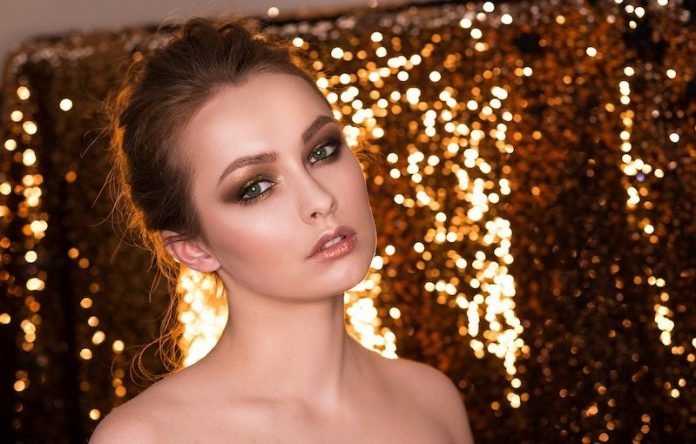
While it’s often hard to appreciate our aging skin, it does tell a story. It speaks of our family heritage:
Genetic code mostly drives the development of lines. It can also say something about our lives, like how we enjoyed the great outdoors or used facial expressions to show feelings.
Love your skin’s story or not, we can’t currently reverse the aging process with a magic pill or potion, says Claudia Hernandez, MD, a dermatologist at Rush University Medical Center.
“What we can do is make changes that impact how skin looks in the future.”
Shop Wisely
Many anti-wrinkle products tell us that the fountain of youth is just a drug store away. But the FDA considers these over-the-counter skin creams cosmetics and outside the FDA’s regulatory scope.
As cosmetics, these products can legally over-promise results, so be wary.
When shopping for skin creams, look for ingredients that can actually lessen the signs of aging:
Retinol—May reduce wrinkles by increasing cellular turnover and boosting collagen, a protein in the skin. It can also help even skin tone. Creams with tretinoin produce similar results at a faster pace but require a prescription.
Glycolic acid—Removes dead skin cells, a process called exfoliation. The result: smoother skin and less visible fine lines.
Protect the Skin You’re In
While at the drug store, don’t forget sunscreen. It protects skin from harmful rays that cause wrinkles and discoloration. “Sunscreen is really the best investment you can make,” Hernandez says. Her sunscreen must-haves:
SPF 30 to 50—Protects your skin, but only if used properly. Read the instructions and reapply as directed. That usually means every two to three hours.
Oil-free—Helps avoid clogged pores, which can lead to acne at any age.
Tint—Matches your skin tone, making it more appealing and more likely to be used.
You can also protect your skin from further damage and enhance its appearance in other ways, Hernandez says.
Stop smoking. Smoking can restrict blood flow and deprive your skin of oxygen, which means nutrients for your skin may never reach their destination.
Smoking also causes you to squint and tighten your mouth. These repetitive facial expressions can lead to wrinkles.
Wear sunglasses. Crow’s feet around the eyes arise from constant squinting.
Be gentle. Scrubbing your skin too hard or using lotions that irritate your skin and causes unflattering redness. Hernandez also advises avoiding creams and soaps that irritate your skin.
Moisturize every day. Moisturizer traps water on your skin. Use it daily to keep skin supple.
Get some shut-eye. A restful night’s sleep helps rejuvenate skin.
Exercise and eat a balanced diet. Regular exercise and a healthy diet may not reduce wrinkles, Hernandez says, but they could reduce skin dullness.
Sunscreen is really the best investment you can make.
Fillers, Botox and Peels
Want to do more to rejuvenate your skin? Talk to a dermatologist about options like these:
Fillers. Cheaper than a facelift, these products plump out wrinkles so they become less visible. The office procedure, which involves injections, takes about 30 minutes and can last for months. The downsides: allergic reactions and tiny skin bumps that could be permanent.
Prescription creams. Dermatologists can prescribe products with retinoids that pack a bigger punch than over-the-counter retinol.
These creams make way for new skin cell growth, slow down the breakdown of collagen and thicken the deeper layer of skin.
These may cause peeling and redness when first used, but these issues typically go away in a couple weeks.
Muscle-relaxants. Botulinum toxin (e.g., Botox) and botulinum toxin type A (e.g., Dysport, Xeomin): These muscle-relaxants block signals to the nerves to soften forehead wrinkles, lines between the eyes and crow’s feet.
Doctors inject muscle relaxants to produce results that last about three to six months. Bruising, drooping eye lids and other side effects may occur.
More Help on the Horizon?
Researchers around the globe continue to uncover more clues as to why skin ages, which could lead to even more therapies.
A recent study looked at the mechanisms behind the skin aging process and found that certain enzyme activity decreases in older skin.
In another study, researchers found stem cells in fat that could prove useful in finding new treatments.
For now, sunscreen offers the easiest and cheapest approach to fighting wrinkles, says Hernandez.
And if you are considering something like fillers or muscle-relaxants, talk to a dermatologist about what would work best for you.
If you care about aging, please read studies about a new antioxidant could reverse blood vessels aging by 15 to 20 years and findings of why high intensity interval training may protect you from aging.
For more information about aging prevention, please see recent studies about endurance exercise may help slow or even reverse aging and results showing that these 9 super foods may help you achieve healthy aging.



